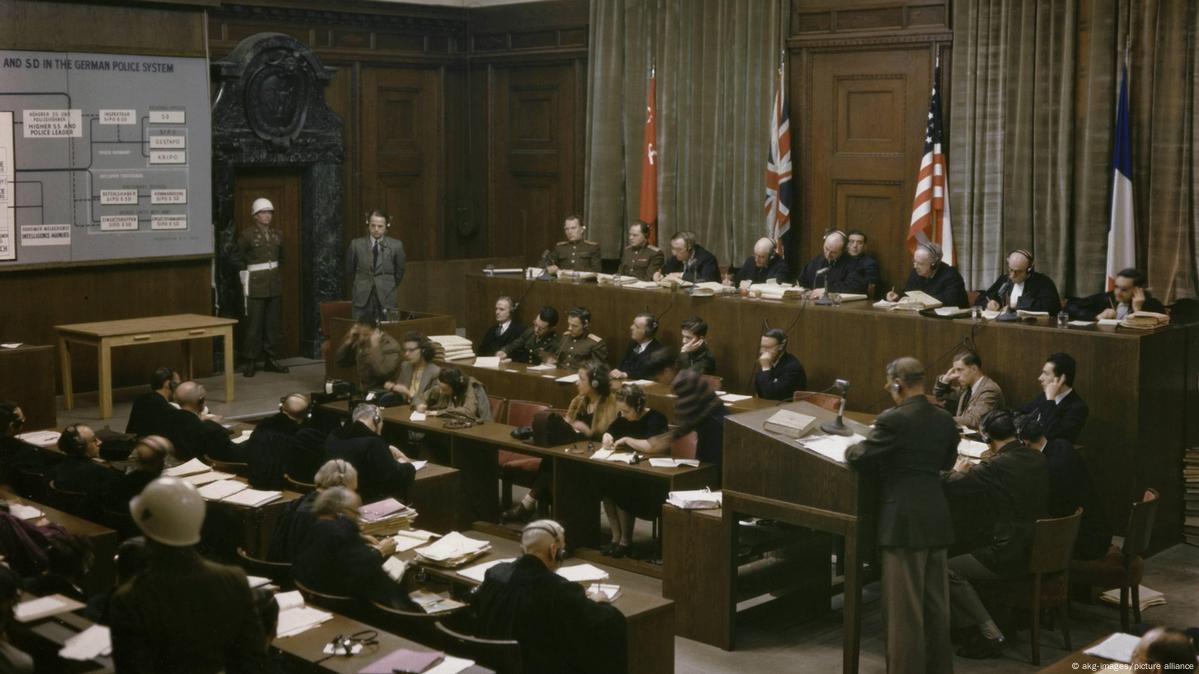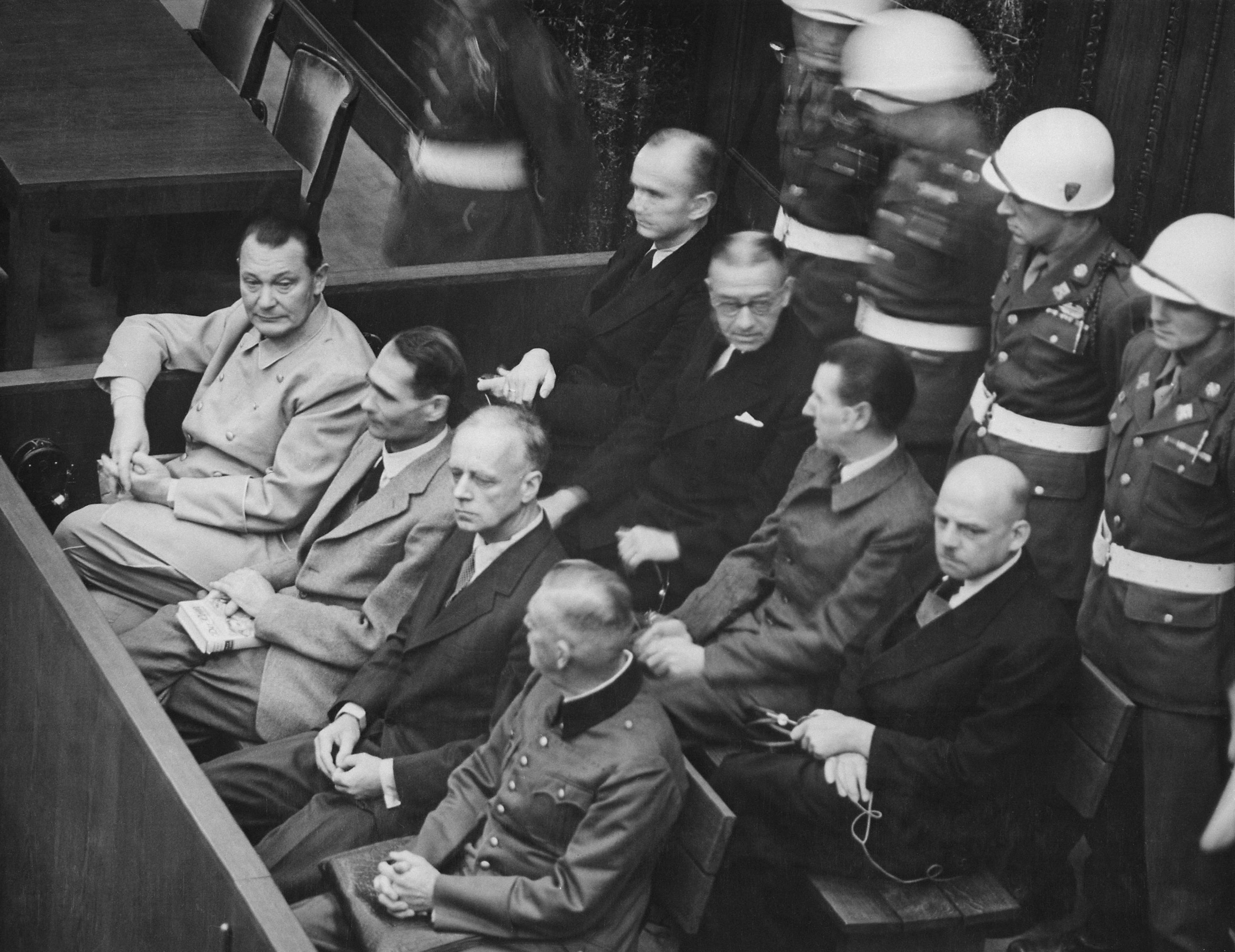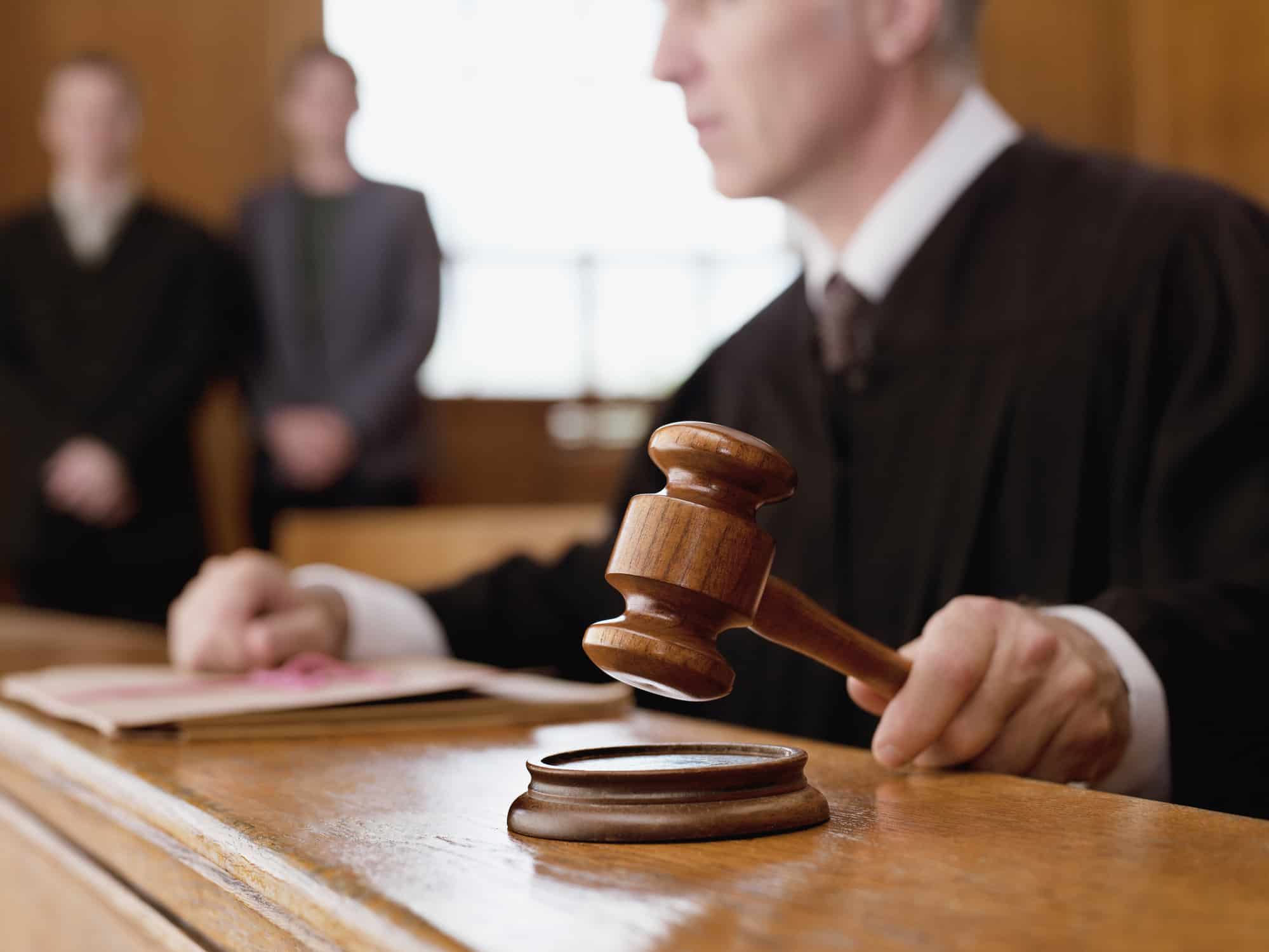Military Tribunal Defined - To ensure that "justice" was done at Nuremberg; American occupation officials released German war criminals decades ahead of schedule.
On Wednesday, January 31, 1951, 10 war criminals sentenced to death by the Nuremberg military tribunal learned that they would live, causing some curiosity in Landsberg Prison. According to newspaper accounts of the incident, the prisoners "cheered for joy" when they heard the news, "shouted with excitement, and hastily removed the red robes hated by every prisoner." Meanwhile, many other prisoners "jumped for joy" when they received the news that their sentences had been significantly reduced by US High Commissioner for Germany (HICOG) John J. McCoy.
Military Tribunal Defined

Of the 142 Germans convicted of war crimes at the 12 Nuremberg military tribunals from December 1946 to April 1949, 88 men and one woman remained imprisoned at Landsberg in January 1951. Of those 89 cases, 78 were acquitted, including 10 of those cases. Death sentence. 32 prisoners, including former arms chief Alfried Krupp and his eight co-accused, were released on foot on the morning of Saturday, February 3, 29 of whom were released immediately. Flowers from the families and many supporters of the Nazi Empire's fallen elite. They were greeted with hugs and kisses and shouted questions from the more than 100 journalists present.
Flanked By Two Military Policemen, Hermann Goering Testifies At The International Military Tribunal Trial Of War Criminals At Nuremberg.
These prisoners were tried by American judges during a fair trial for one or more of the four crimes listed in Allied Control Council Law 10, which governed the occupation of Germany. These offenses include crimes against peace; war crimes; Crimes against humanity and membership in criminal organizations (including leadership of the Nazi Party, Gestapo, SD, SS, SA or Reich Cabinet).
12 The Nuremberg Trials were deliberately commissioned by Attorney General Telford Taylor and his staff The Nuremberg Succession Trials to serve a wider investigative and didactic purpose: to re-educate the German people politically and morally; As an American-style Democrat. Although the trial was primarily concerned with determining the innocence or guilt of individual defendants for crimes newly established in international law, it would serve as a historical investigation of the Nazi regime. Taylor argued that the crimes of Nazism were not the responsibility of a rogues gallery, but reflected a wider moral and ethical breakdown in German culture and political institutions.
A number of individual actors are responsible for the disintegration of Western civilization and the Third Reich. the military industry of Nuremberg; civilian military It is designed as a forensic examination of Nazi totalitarianism that will clearly demonstrate the breadth and depth of individual and institutional complicity in Nazi terror as represented by the medical and legal professions. The concentration camp system and the SS organization were tasked with racially reorganizing Europe through sterilization and murder.
Showing the guilt of individual defendants with extensive documentary evidence from the regime's own archives, Taylor saw the court at Nuremberg as a classroom where the German people would be redeemed and prepared to participate in democratic politics. Taylor's ambitious efforts would fulfill the goal of justice in eliminating any German political or cultural tendency to whitewash the Third Reich before the democratic reconstruction of the German people.
The Opening Of The Proceedings At The International Military Tribunal Of War Criminals At Nuremberg. In
General Lucius C. Clay (seat center frame); Chief of the United States Military Government Office (OMGUS) and General Telford Taylor (seated to Clay's right); Head of the Office of the Chief of the War Crimes Council (OCCWC); ) on April 18, 1947, see Case 4 (WVHA Experiments/Concentration Camps). Image courtesy of the National Archives.
Prisoners Although their lawyers and their supporters often complained during and after the trial that their imprisonment represented an illegal application of the US.
The law of the American Bar and allies, tasked with defining the legal rationale behind the tribunal, sought to place the Nuremberg trials within existing notions of international law and standard criminal justice procedures. As recently as 1949, U.S. War Commander Lucius Clay in Germany checked and authenticated almost all the sentences. The US Supreme Court rejected every appeal by the prisoners. So, why did High Commissioner John J. McCloy show mercy to this individual in 1951?

Despite the wider context of the Cold War and the intense political debate over the issue of war criminals in West Germany, McCloy does not justify recasting the Nuremberg sentence in Cold War language.
Holocaust & Memory
Or in response to a pro-amnesty German political movement. Both McCloy and the Advisory Board on Clemency for War Criminals expressed views that motivated and legitimized their actions to motivate and legitimize American justice that did not favor German and American public opinion on this matter.
West German veterans and church associations; Despite the well-documented lobbying by politicians and the media, the decision by a handful of powerful American officials in Germany to free war criminals was, at one time, not a matter of prioritizing politics over law. The reason for turning political reality into a false consensus is that the Nuremberg tribunal made unjustified conclusions that needed to be corrected.
According to the laws governing the American occupation of Germany; McCloy's power to commute the sentences of Nuremberg war criminals is absolute and entirely discretionary. By using this power to pardon the Landsberg prisoners, McCloy's policy of dominating the Landsberg prisoners in creating what the disillusioned ex-Nuremberg prosecutor lamented as "a new kind of criminal with impunity" raised legal questions as to whether they were true. governed by the norms of the American criminal system or exist in a category unto themselves.
Are Landsberg prisoners entitled to parole or other similar pardons for their sentences for good behavior? Are red-jacketed inmates, especially convicted felons, entitled to a formal appeals process over and above their individual appeals? If the Supreme Court, in repeated admissions, does not have jurisdiction over German nationals tried by US military tribunals, what mechanisms can prisoners have to challenge their sentences?
Who Has The Authority To Convene A Court Martial?
In answering these questions, the instinct of McCloy and his staff to drag the American criminal appeals procedure back to the German occupation placed them in unprecedented legal territory. The transfer of the Landsberg prison is inevitably linked to the conclusion of this discussion. HICOG officials eventually concluded that German war criminals were first- and second-degree war criminals and were entitled to all remedies under American law to improve their conditions and reduce their sentences.
This process threatened to legitimize the broader German refusal to see the subsequent Nuremberg trials after the four-power International Military Tribunal as anything other than a corrupt exercise in "victor's justice." On December 28, 1949, J.B. for McCloy. J. B. from Rintels. J. B. from the Office of General Counsel to Rintels. A memorandum prepared by Rintels explores some of the "unforeseen dangers" of the Nuremberg Plan of Explanation. Rintels noted that both the High Commissioner and the War Governor had been attacked by "petitions relating to war criminals" which were "intended to provide assistance to certain individuals" but were in fact "an attack on the original war crimes scheme". the whole basic idea and this; The implications include the guilt of members of the German government responsible for the crimes they have been convicted of.” The petition, he continued, "always represents an attempt to rehearse arguments that have been considered and rejected by [previous] tribunals and commentaries."
The list of arguments is long: the allegation that the defendant acted on the orders of superiors; Accusations of hypocrisy for not prosecuting their atrocities; charge

Justice; Claims for immunity from prosecution as prisoners of war; Allegations that the judicial procedure was not fair or transparent, or that the defendant was denied access to a lawyer or sufficient legal evidence. The HICOG campaign panel will only instigate new petitions with the same layers that have been extensively discussed and rejected as baseless. As it turns out, these concerns are justified.
Indian National Army Trials
In Benjamin F. Ferencz, Case 9 (Einsatzgruppen Trial), two German defense attorneys objected to the U.S. prosecutor's submission of documentary evidence. Benjamin F. Ferencz who implicated his client in the massacre. Photo courtesy of the National Archives.
2 March In 1950, McCloy, in a memorandum giving an assessment of the missionary body's functions, HICOG legal counsel Robert Bowie argued for greater authority from the appellate court. One thing Bowie didn't seem to stress enough was that there would be no more tribunals. There is no judicial forum for proposals for new tribunals.” "Every legal system should provide some machinery for the presentation of evidence that will fail," Bowie continued.
Military drone range, laser range finder military, military range bags, military range targets, long range military radio, military radio range, military range finder, military long range binoculars, range rover military discount, military range rover, range of military drones, military range bag
0 Comments